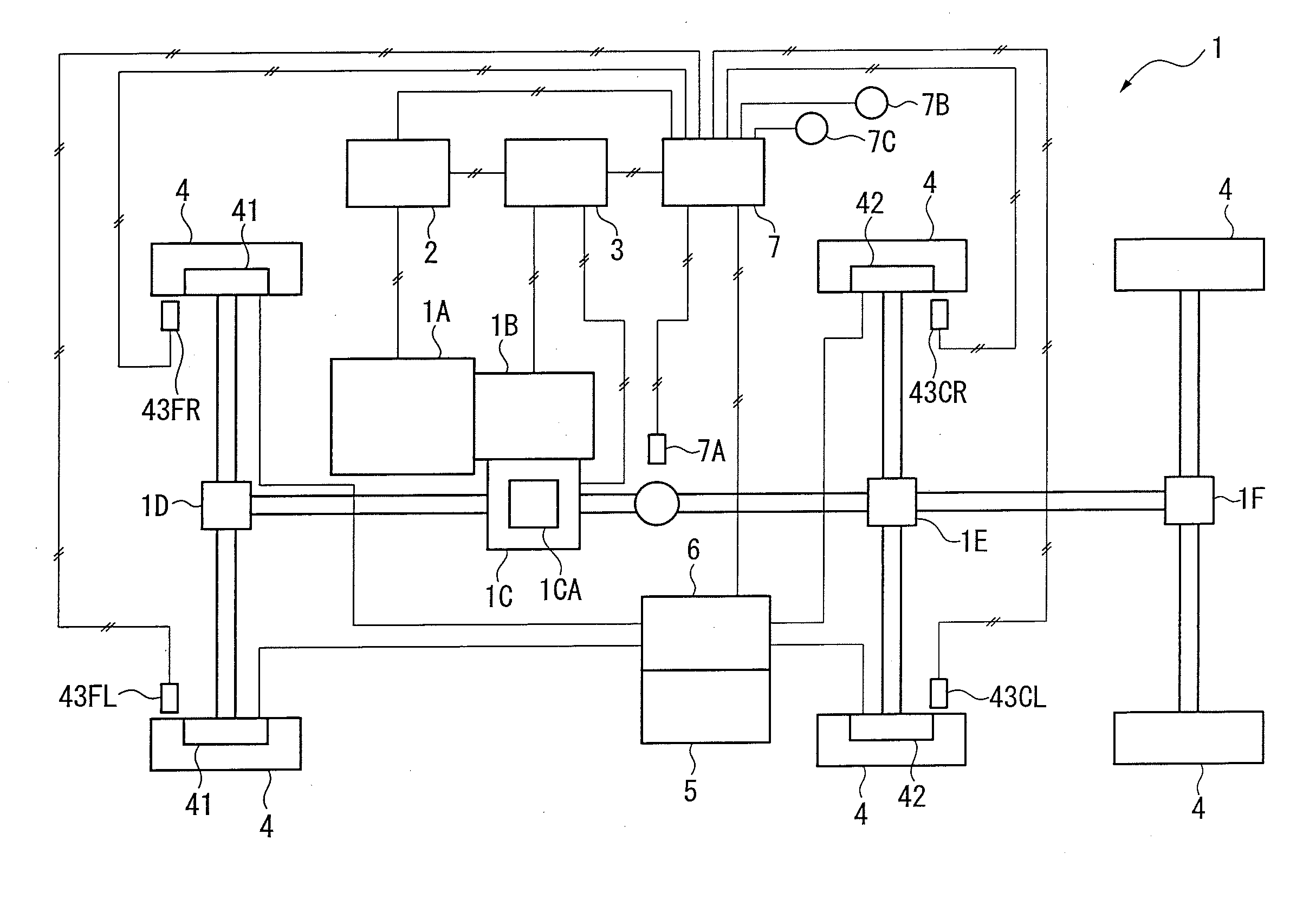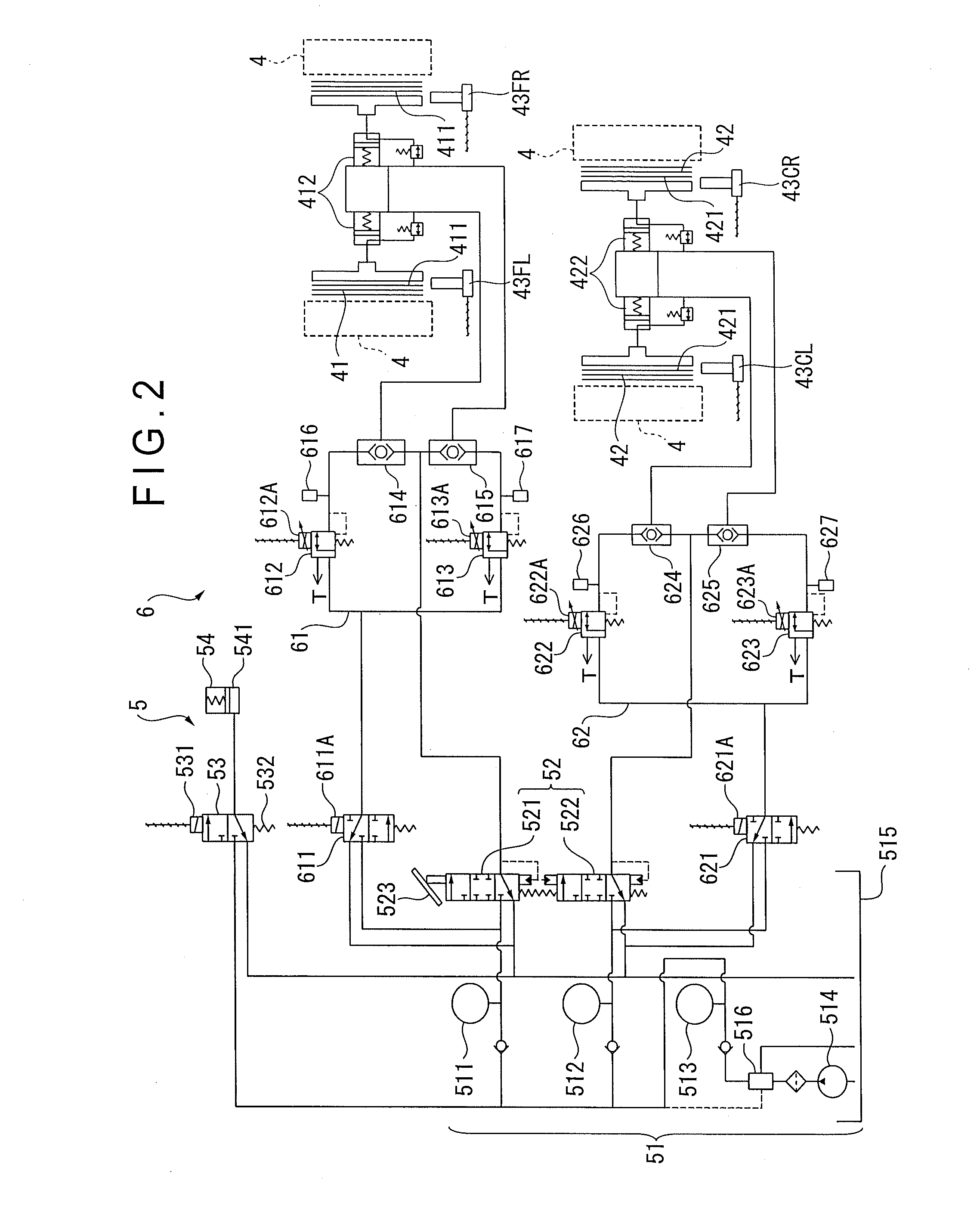Traction Control Device
a technology of traction control and control device, which is applied in the direction of braking system, process and machine control, instruments, etc., can solve the problem that the driving torque cannot be transmitted to the other driving wheels, and achieve the effect of preventing acceleration reduction
- Summary
- Abstract
- Description
- Claims
- Application Information
AI Technical Summary
Benefits of technology
Problems solved by technology
Method used
Image
Examples
Embodiment Construction
)
[0031]Exemplary embodiment(s) of the invention will be described below with reference to the attached drawings.
1. Structure of Dump Truck 1
[0032]FIG. 1 shows a dump truck 1 according to an exemplary embodiment of the invention. The dump truck 1 is an articulated truck that includes separate front and rear vehicle body frames. A vehicle body of the dump truck 1 includes an engine 1A, a transmission 1B, differential mechanisms 1C to 1F and a differential adjusting mechanism 1CA. The output of the engine 1A is controlled by an engine controller 2 and is transmitted to the transmission 1B. The transmission 1B includes a torque converter and a lockup mechanism (not shown). A transmission controller 3 performs speed change control and lockup control on the transmission 1B.
[0033]A rotary driving force transmitted from the engine 1A to the transmission 1B rotates all wheels 4 via the differential mechanisms 1C to 1F and is transmitted to the road surface.
[0034]In this exemplary embodiment,...
PUM
 Login to View More
Login to View More Abstract
Description
Claims
Application Information
 Login to View More
Login to View More - R&D
- Intellectual Property
- Life Sciences
- Materials
- Tech Scout
- Unparalleled Data Quality
- Higher Quality Content
- 60% Fewer Hallucinations
Browse by: Latest US Patents, China's latest patents, Technical Efficacy Thesaurus, Application Domain, Technology Topic, Popular Technical Reports.
© 2025 PatSnap. All rights reserved.Legal|Privacy policy|Modern Slavery Act Transparency Statement|Sitemap|About US| Contact US: help@patsnap.com



